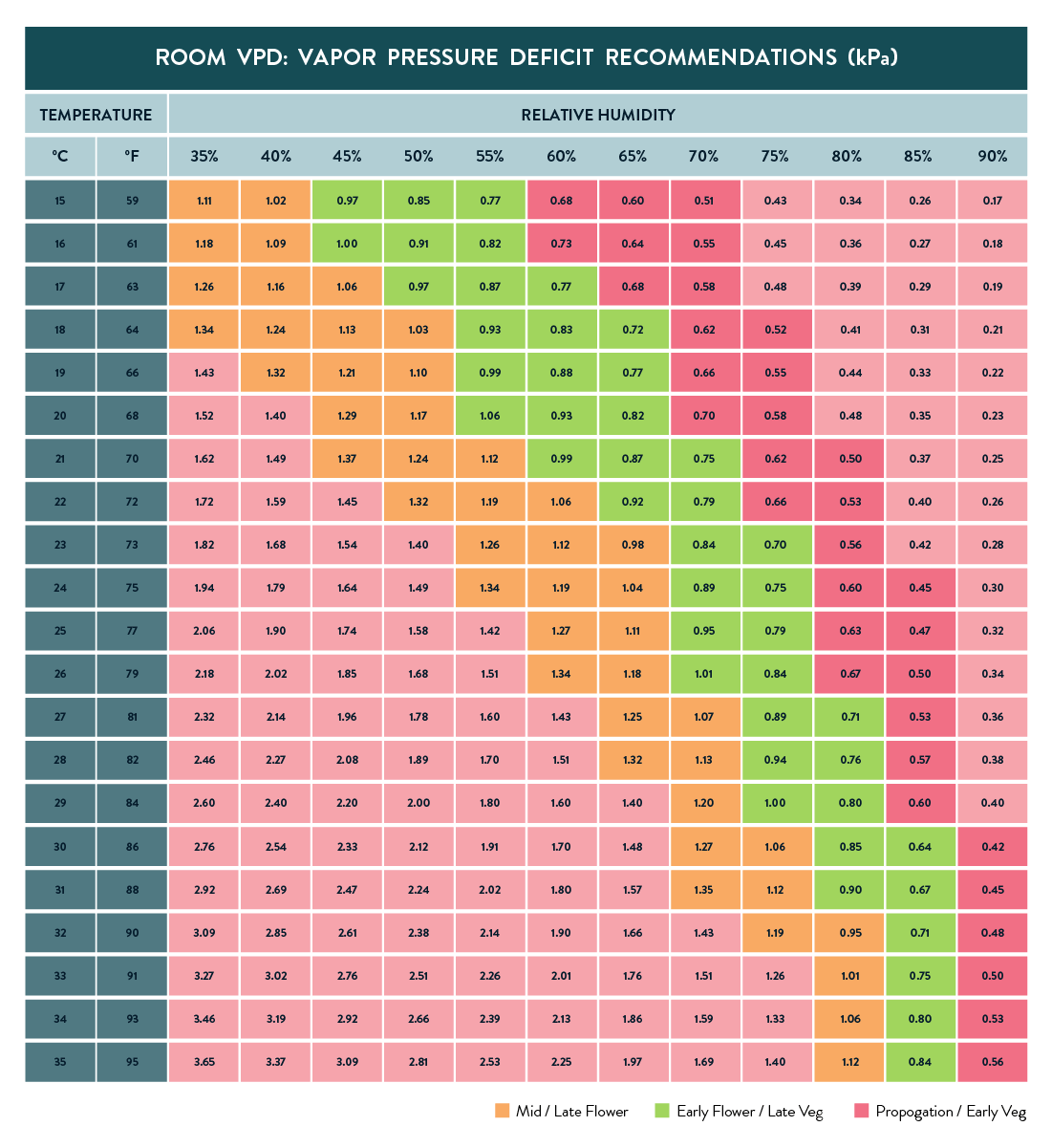VPD Chart
A Vapor Pressure Deficit, or VPD Chart is a proven tool that can maximize your desired results when growing in a controlled environment. Our vapor chart suggests optimal ranges to run your plants during the different stages of growth.
Dialing in a proper VPD in your grow will help to reduce issues brought on by either too much transpiration, aka high VPD values, or the plant’s inability to transpire enough, AKA low VPD values.
Making sure the VPD isn’t too low where the plants are unable to evaporate enough water to encourage the transport of nutrients is very important for plant health. In cases where VPD is extremely low, water condensation can provide a situation for fungal growth and other diseases, which is exactly what we are trying to prevent.
How does VPD affect cannabis growth?
To learn how to control VPD, you first need to understand its effects on your plants’ growth.
The stomata are the first area of the plant where you’ll notice a change. Higher VPD will cause the stomata to constrict to prevent excessive water loss. As a consequence of smaller stomata, the amount of CO2 the plant absorbs reduces as well, which will directly affect photosynthesis. Thus, adjusting VPD will enable you to fine-tune this process.
Higher VPD content will also speed up the transpiration of water from the leaf to the air. In turn, this increases the ability of the roots to absorb nutrients from the soil. However, there is also a downside to excessive VPD and is the reason why you need a cannabis VPD chart. Weed can be highly sensitive to VPD, as more of it can stress the plant, negatively affecting its quality, growth, and yield.
Finding the right VPD for each growth stage
The key to calculating the right VPD is to check the growth stage of the plant. The plants are relatively fragile at the clone or baby stage, so they can’t handle too much stress. They also need higher rates of nutrients to compensate for their underdeveloped roots. So, as a rule of thumb, aim for a VPD range of around 0.5 – 0.7 kPa.
Cannabis at the vegetative state is hardier than a baby plant; hence, it can withstand higher VPD concentrations. Generally, aim to slowly raise the VPD throughout this stage until it tops at 1.0 kPa. Note that CO2 absorption is vital here, so try not to increase your VPD dramatically.
Lastly, the flowering stage can withstand higher VPD but requires lower humidity. Slowly raise the VPD from 1.0 kPa until it hits around 1.4 kPa.
Finding the right grow light
Light intensity is one of the main factors that can indirectly affect VPD as it can increase or reduce the plant’s temperature. Higher temperatures lead to more VPD content.
It’s recommended to get bulbs with a higher intensity from the start. That’s because it’s easier to reduce intensity than it is to increase it. What’s more, higher levels lead to denser plants with higher yields.
The light color is also a crucial consideration since plants need different wavelengths during each growth stage. The vegetative state favors blue lights, while the flowering stage requires red light for optimal growth. If you need help finding the right LED grow light for your harvest or have questions about using our VPD chart, contact Scynce LED today.

